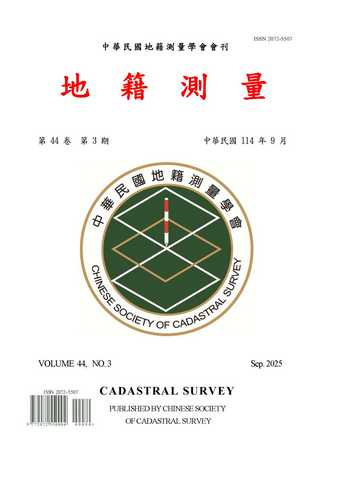 |
 本站僅提供期刊文獻檢索。 本站僅提供期刊文獻檢索。
【月旦知識庫】是否收錄該篇全文,敬請【登入】查詢為準。
 最新【購點活動】 最新【購點活動】
|
| 篇名 |
地面光達系統誤差分析及校正
|
| 並列篇名 |
The Analysis of Systematic Errors and Calibration of Ground-Based LIDAR |
| 作者 |
曾義星、林見福、蔡漢龍、陳鶴欽、曾耀賢 |
| 中文摘要 |
地面光達可在短時間內快速獲取被掃瞄物表面高密度、高精度的3D點雲資料,提供豐富的資訊以進行被掃瞄物3D模型之重建,儀器廠商宣稱之規格表中,多描述地面光達的精度能達到公分級的水準,更甚至有公釐級精度水準。然而儀器規格表中所列的通常是雷射測距的精度,而非掃瞄儀的定點精度,本研究希望能提出一個合適的誤差模式來對掃瞄誤差與精度進行評估,並能在此模式下檢核出儀器的系統誤差來源,最後針對儀器存在的系統誤差加以改正。並再配合室外檢定方式對地面光達進行檢定工作,選定一合適校正場佈設反射標,以傳統測量方式與地面光達量測得的資料加以處理,計算地面雷光達誤差與精度,最後以六參數加測角測距參數模式改正儀器掃瞄時的系統性誤差,而結果亦顯示此種方法能有效改正儀器誤差。
Ground-based LiDAR can easily acquire large amounts of elevation data in a short time thatoffer high density and accuracy information to create three dimensional models of buildings.Manufacturing announced that the accuracy of ground-based LiDAR can reach level of centimeter, even millimeter. But listed in the specifications of the instrument is usually the accuracy of range, notposition. These 3D models are used in a wide variety of applications such as building construction, disaster prevention, architecture, preserving the cultural assets, transmitter placement intelecommunication. We would like to present an appropriate error model that we believe willsignificantly help in the explanation of scanner errors. We could acquire the cause of errors by thismodel. Then, we could rectify the systematic errors made by the scanner. In addition, the next section discusses an outdoor field for calibration purposes. The calibration approach used is based on settingup targets in an indoor field. We will deal with two methods ---- traditional (total station) and LiDARmeasurement, which results in the errors and accuracy of LiDAR. The systematic errors of thescanner are rectified via the coordinates transformation of 10 parameters, that includes 3 rotation, 3translation, 2 angular, and 2 ranging parameters. The result has shown that these 10 parameters aresufficient for rectification. |
| 英文摘要 |
Ground-based LiDAR can easily acquire large amounts of elevation data in a short time thatoffer high density and accuracy information to create three dimensional models of buildings.Manufacturing announced that the accuracy of ground-based LiDAR can reach level of centimeter,even millimeter. But listed in the specifications of the instrument is usually the accuracy of range, notposition. These 3D models are used in a wide variety of applications such as building construction,disaster prevention, architecture, preserving the cultural assets, transmitter placement intelecommunication. We would like to present an appropriate error model that we believe willsignificantly help in the explanation of scanner errors. We could acquire the cause of errors by thismodel. Then, we could rectify the systematic errors made by the scanner. In addition, the next section discusses an outdoor field for calibration purposes. The calibration approach used is based on settingup targets in an indoor field. We will deal with two methods ---- traditional (total station) and LiDARmeasurement, which results in the errors and accuracy of LiDAR. The systematic errors of thescanner are rectified via the coordinates transformation of 10 parameters, that includes 3 rotation, 3translation, 2 angular, and 2 ranging parameters. The result has shown that these 10 parameters aresufficient for rectification. |
| 起訖頁 |
39-50 |
| 刊名 |
地籍測量 |
| 期數 |
200803 (27:1期) |
| 出版單位 |
中華民國地籍測量學會
|
| 該期刊-上一篇 |
建物區DSM資料編修系統建構與試驗 |
| |
|
新書閱讀
最新影音
優惠活動
|